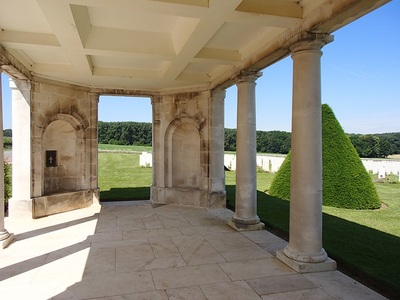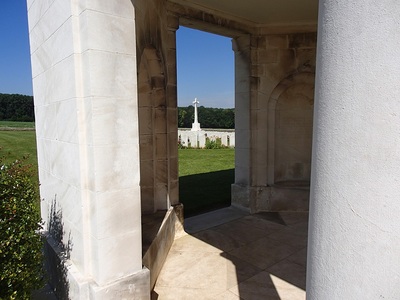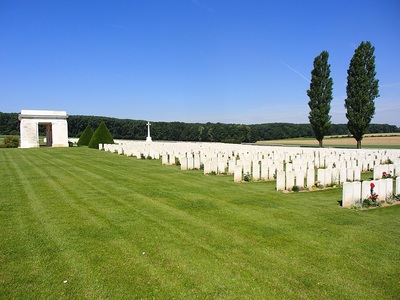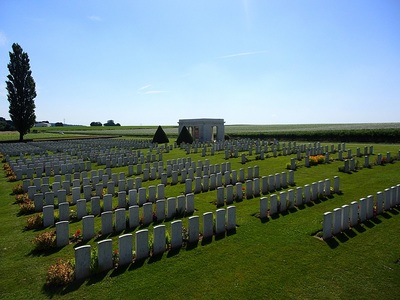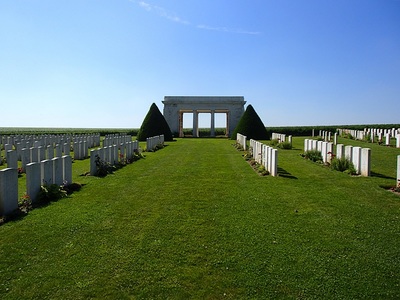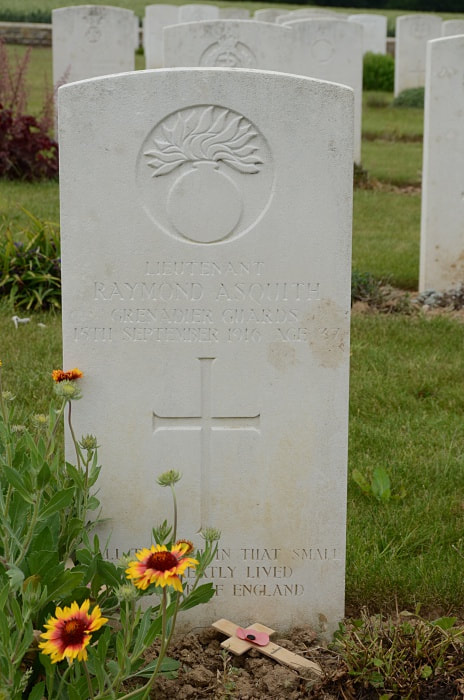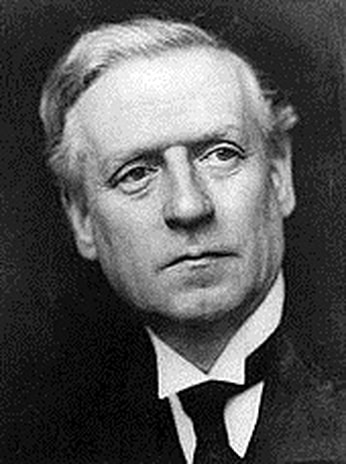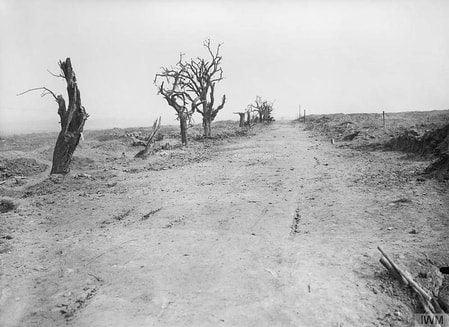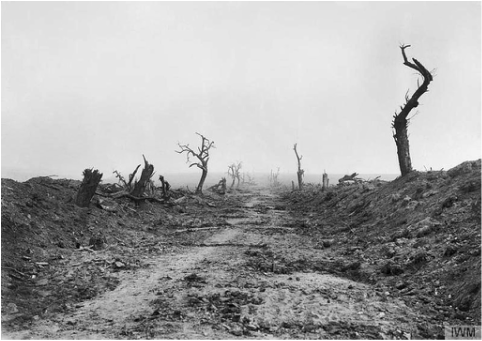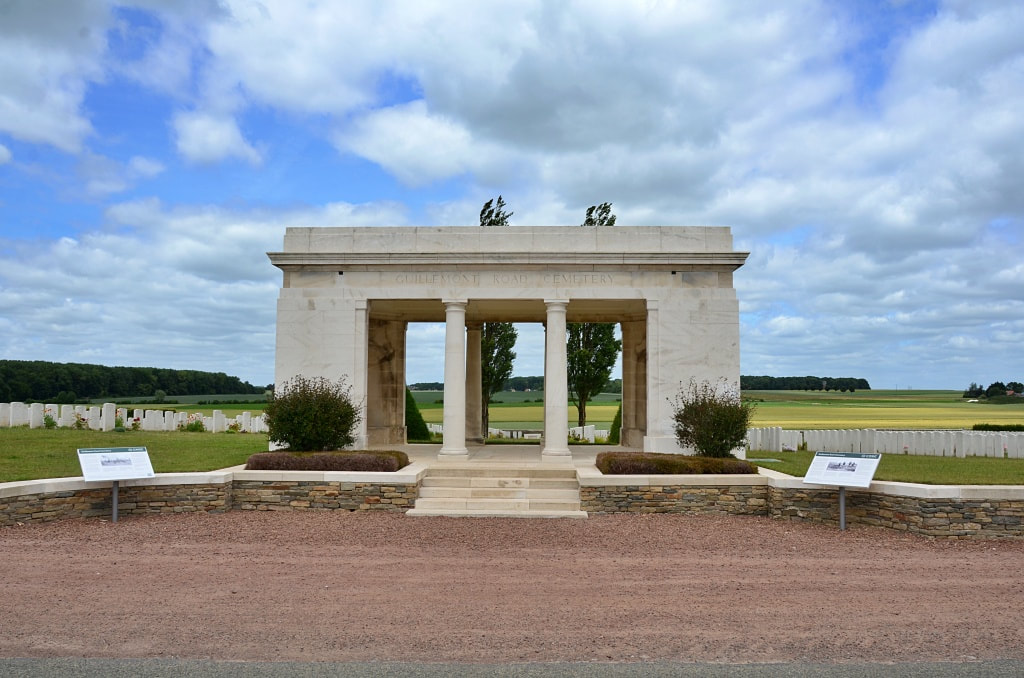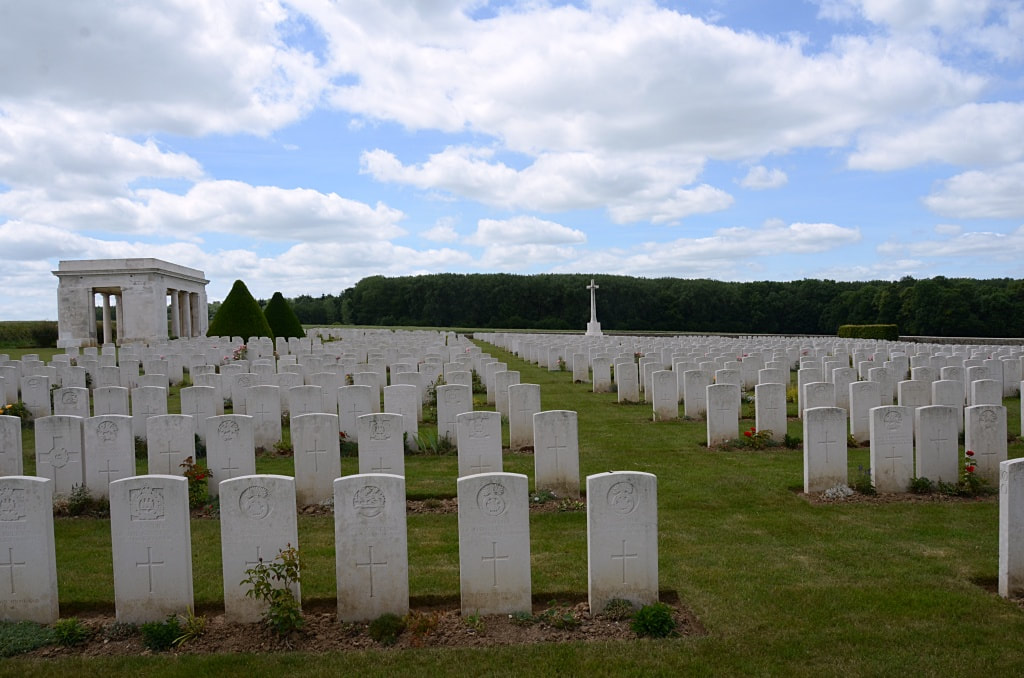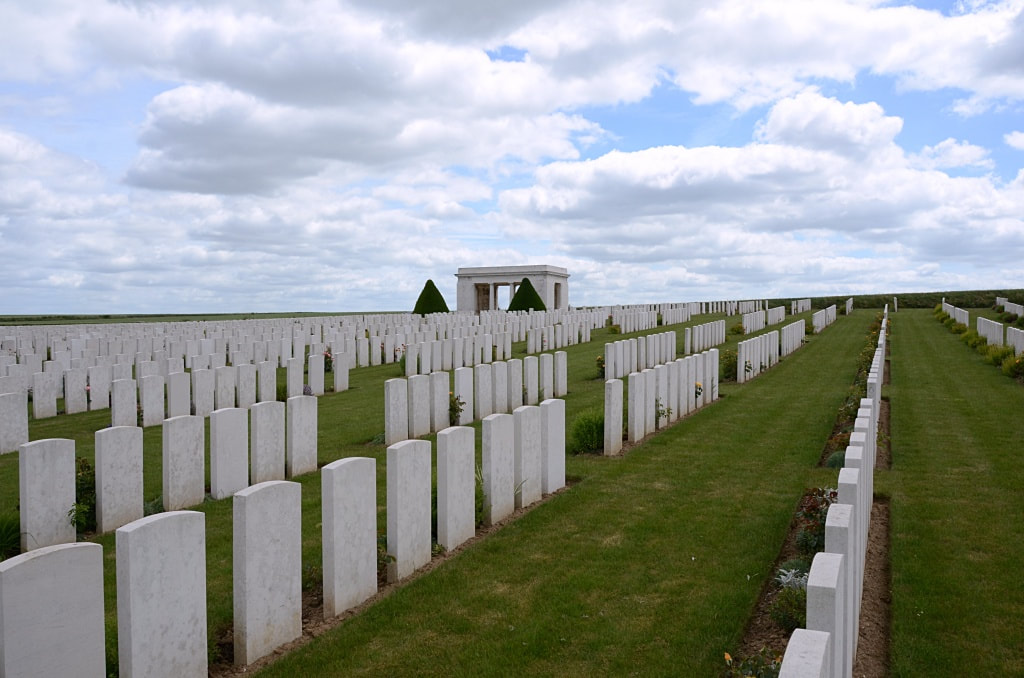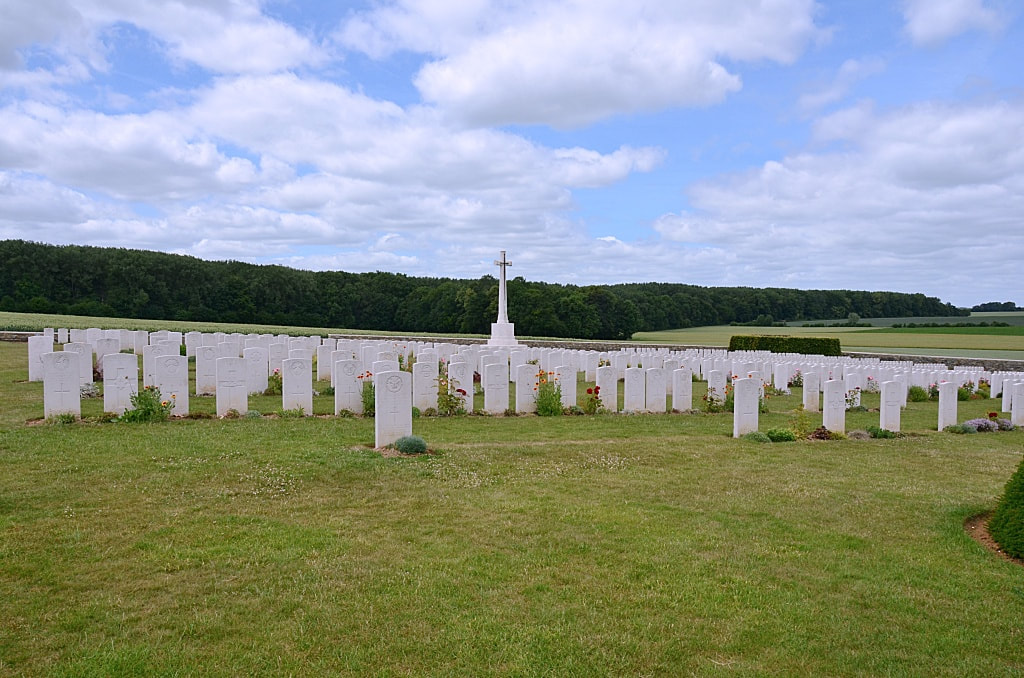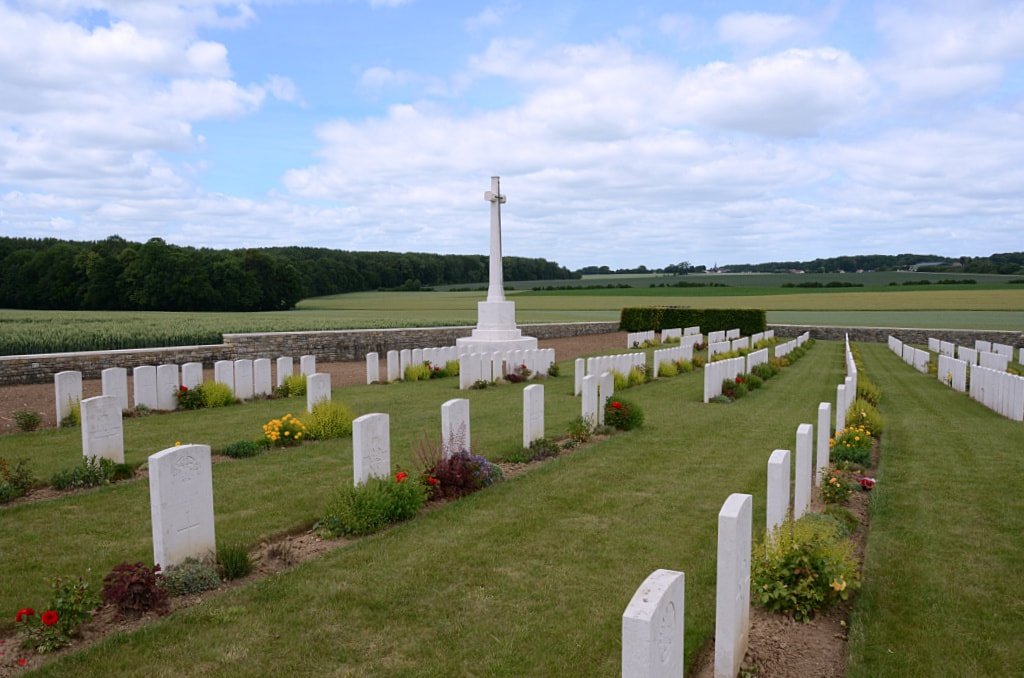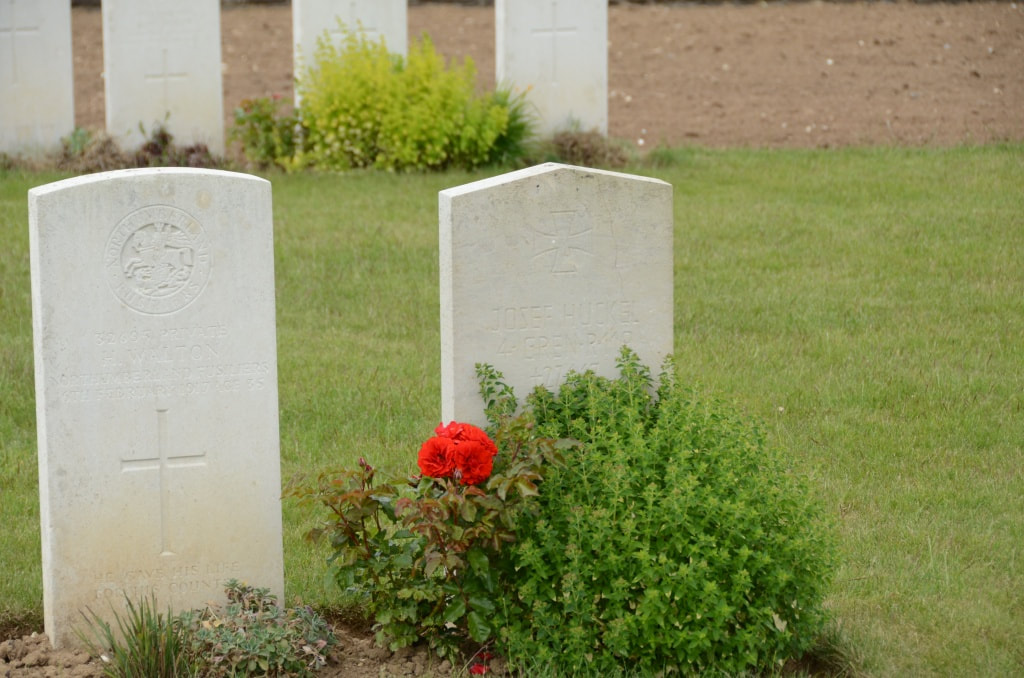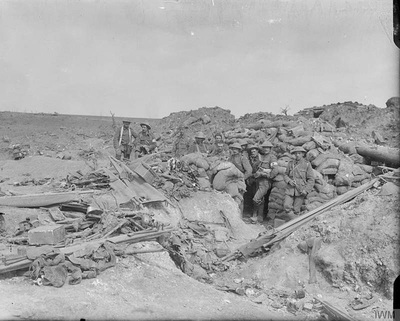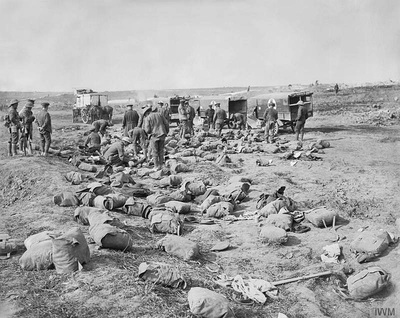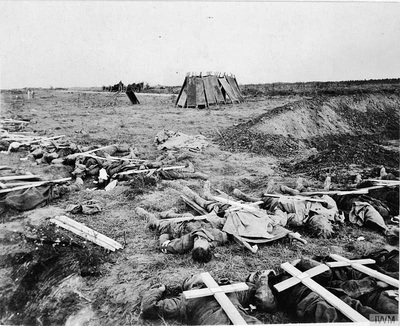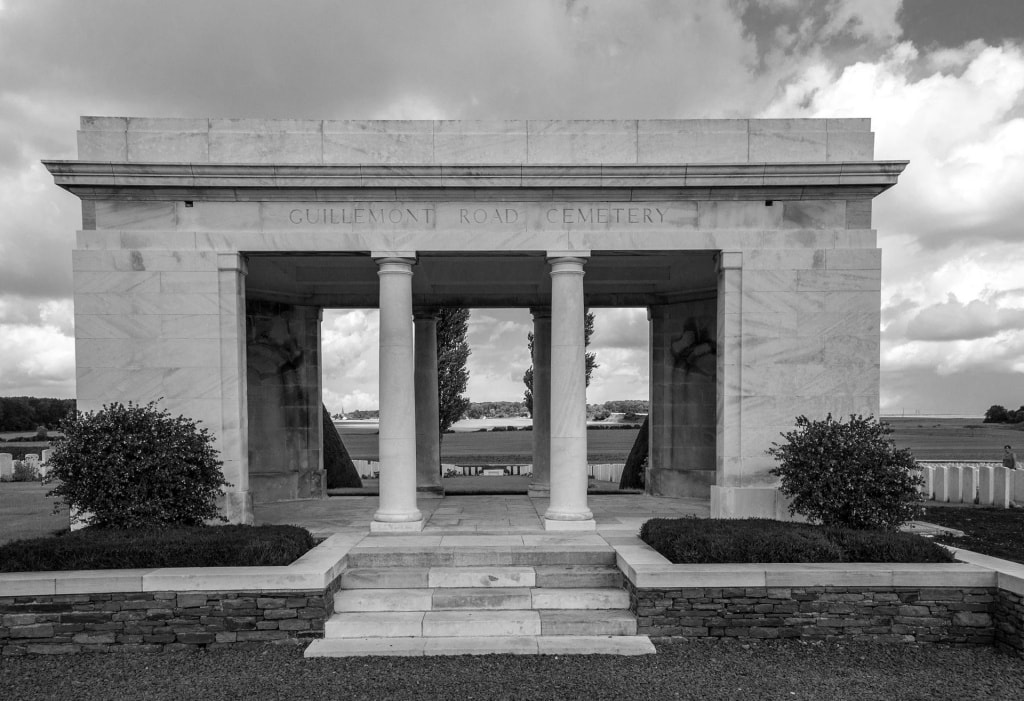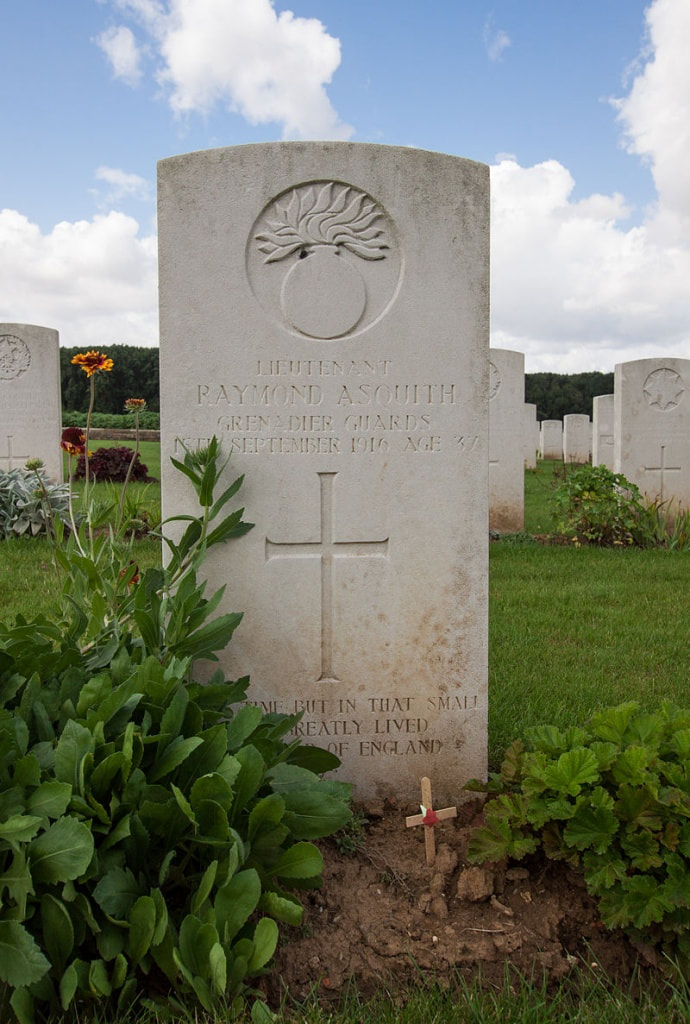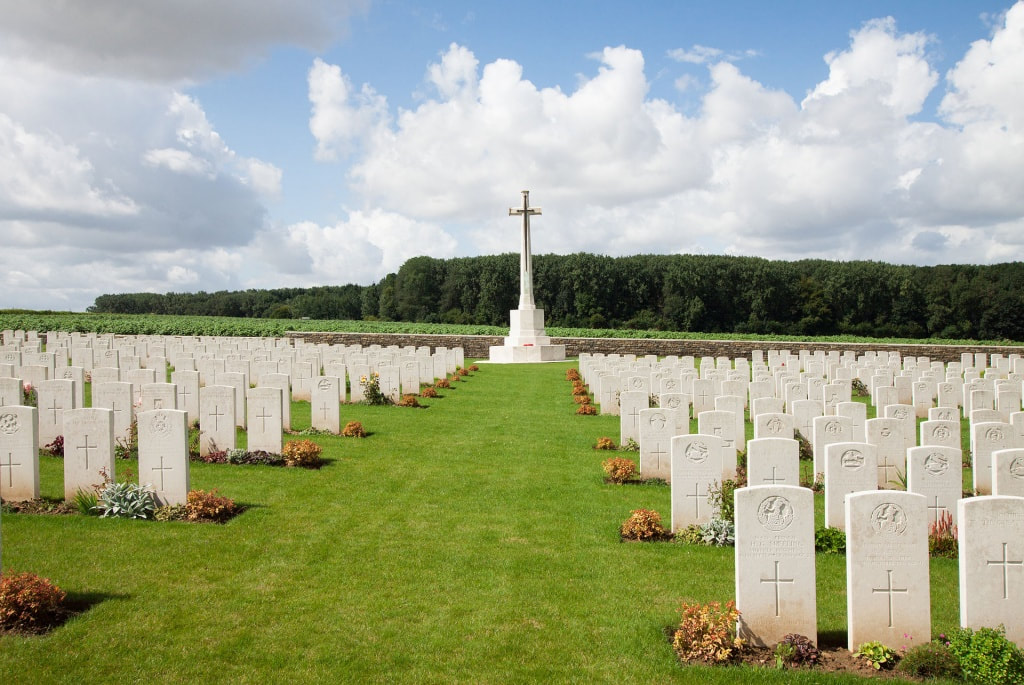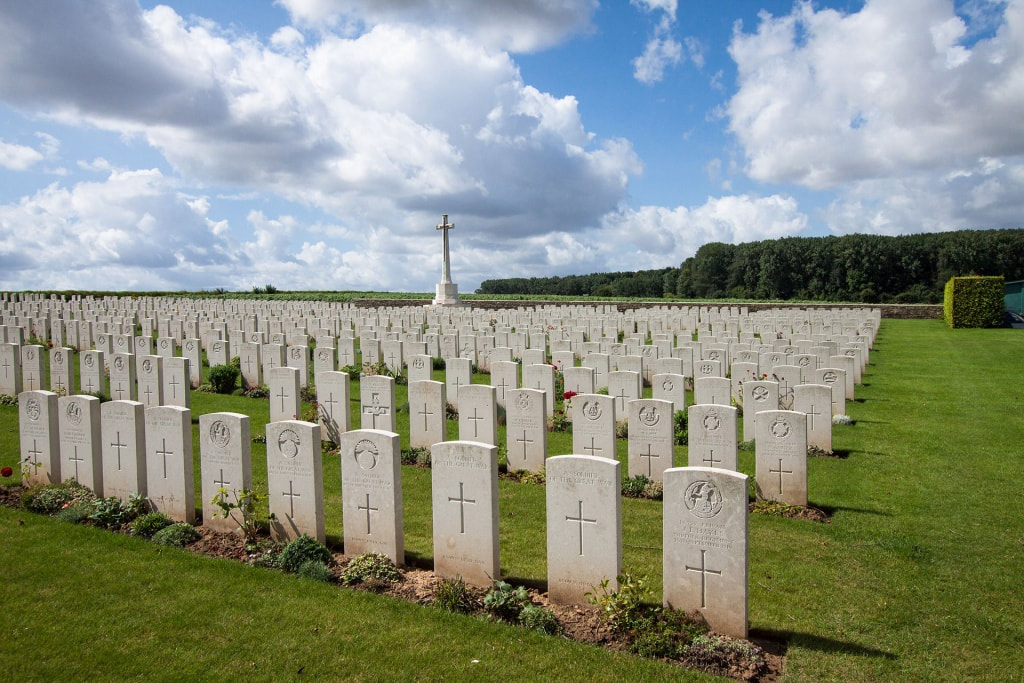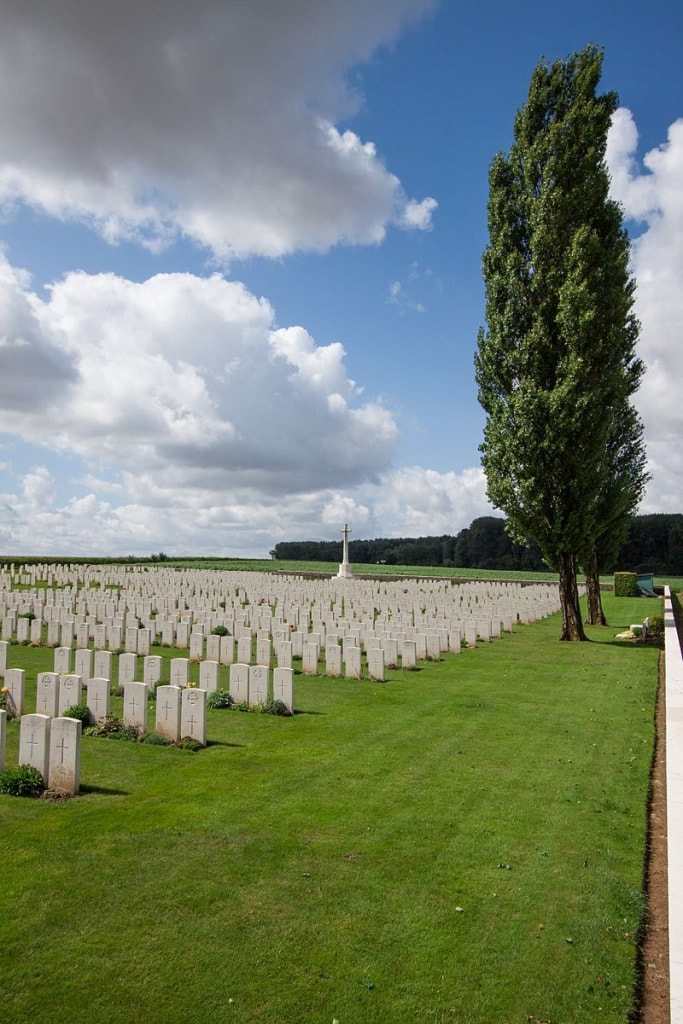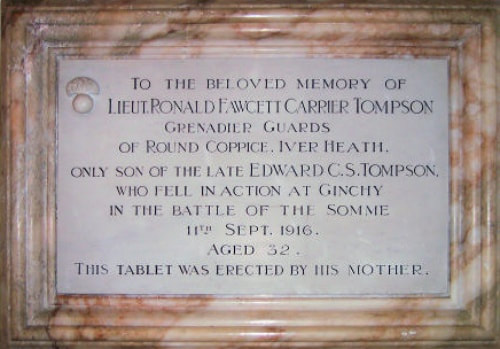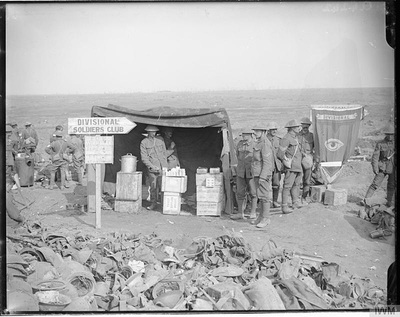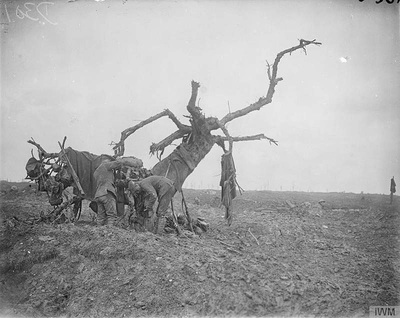GUILLEMONT ROAD CEMETERY
Guillemont
Somme
France
GPS Coordinates Latitude: 50.01034 Longitude: 2.81592
Location Information
Guillemont is a village 12 kilometres east of Albert.
From the D929 direction Bapaume-Albert take the 2nd turning for Martinpuich, continuing along the D6 for 5 kilometres until the crossroads in the village of Longueval. Follow route D20 direction Guillemont until you leave Guillemont on the D64 direction Montauban. The Cemetery is 500 metres on the right as you leave Guillemont.
Visiting Information
Wheelchair access is possible with some difficulty.
Historical Information
Guillemont was an important point in the German defences at the beginning of the Battle of the Somme in July 1916. It was taken by the 2nd Royal Scots Fusiliers on 30 July but the battalion was obliged to fall back, and it was again entered for a short time by the 55th (West Lancashire) Division on 8 August. On 18 August, the village was reached by the 2nd Division, and on 3 September (in the Battle of Guillemont) it was captured and cleared by the 20th (Light) and part of the 16th (Irish) Divisions. It was lost in March 1918 during the German advance, but retaken on 29 August by the 18th and 38th (Welsh) Divisions.
The cemetery was begun by fighting units (mainly of the Guards Division) and field ambulances after the Battle of Guillemont, and was closed in March 1917, which it contained 121 burials. It was greatly increased after the Armistice when graves (almost all of July-September 1916) were brought in from the battlefields immediately surrounding the village and certain smaller cemeteries, including:-
HARDECOURT FRENCH MILITARY CEMETERY. The village of Hardecourt-au-Bois was captured by French troops on the 8th July, 1916, and again by the 58th (London) and 12th (Eastern) Divisions on 28 August 1918. Five British Artillerymen were buried by their unit in the French Military Cemetery, in the middle of the village, in September 1916; and in 1918 the 12th Division buried in the same cemetery 14 men of the 9th Royal Fusiliers and two of the 7th Royal Sussex.
Guillemont Road Cemetery now contains 2,263 Commonwealth burials and commemorations of the First World War. 1,523 of the burials are unidentified but there are special memorials to eight casualties known or believed to be buried among them.
Total Burials: 2,268.
Identified Casualties: United Kingdom 740, Australia 1, Canada 1, Germany 1, South Africa 1. Total 744.
Unidentified Casualties: Commonwealth 1,523, Germany 1. Total 1,524.
The cemetery was designed by Sir Herbert Baker and George Hartley Goldsmith

Lieutenant
Raymond Asquith
3rd Bn. Grenadier Guards
15th September 1916, aged 37.
Plot I. B. 3.
Son of the Rt. Hon. (and former M.P.) H. H. Asquith, P.C., Prime Minister of the United Kingdom 1908-1916 (now 1st Earl of Oxford and Asquith, K.G.), and Helen his wife; husband of Katharine Asquith, of 17, Oxford Square, London, W.2.
His headstone bears the inscription: "Small Time, But In That Small Most Greatly Lived This Star Of England." (Quote from Henry V. Act 5, Scene 2 by William Shakespeare.)
Raymond Asquith was an English barrister and eldest son and heir of British Prime Minister Herbert H. Asquith by his first wife Helen Kelsall Melland.
He was educated at Winchester College and won a scholarship to Balliol College, Oxford in 1896. He won Ireland, Derby, and Craven scholarships, and was distinguished by first-class honours. Elected a fellow of All Souls in 1902, he was called to the bar in 1904. Described as tall and handsome, Asquith was a member of "The Coterie," a group of Edwardian socialites and intellectuals.
Raymond Asquith was married on 25 July 1907 to the former Katharine Frances Horner (1885–1976), younger daughter of Sir John Francis Fortescue Horner, of Mells, Somerset. Her mother Lady Horner (d. 1940) was the former Frances Jane Graham, elder daughter of William Graham, MP, a wealthy merchant, passionate art collector, and Liberal MP for Glasgow 1865–1874. She was a notable hostess and patron of the arts, especially the Pre-Raphaelites and John Singer Sargent. The Horners had four children – Cicely (b. 1883), Katharine (b. 1885), Mark (who died in his teens), and Edward (b. 1888).
Asquith was junior counsel in the North Atlantic Fisheries Arbitration and the investigation of the sinking of the Titanic, and was considered a putative Liberal candidate for Derby. However, his rise was interrupted by the outbreak of World War I. He was initially commissioned, on 17 December 1914, as a second lieutenant in the 16th (County of London) Battalion, London Regiment. He was transferred to the 3rd Battalion, Grenadier Guards, on 14 August 1915 where he was initially assigned as a staff officer, but requested to be returned to active duty with his battalion, a request granted before the Battle of the Somme. While leading the first half of No. 4 Company in an attack near Ginchy on 15 September 1916, during the Battle of Flers - Courcelette, he was shot in the chest and died while being carried back to British lines. He was buried in Guillemont Road Cemetery, his family had inscribed on his headstone 'Small time but in that small most greatly lived this star of England', a concluding line from Shakespeare's "Henry V", about a warrior king who had died in his thirties after campaigns in France.
Raymond and Katharine had 3 children, Lady Helen Frances Asquith (1908–2000), who died unmarried. Lady Perdita Rose Mary Asquith (1910–1996) who married the 4th Baron Hylton (d 1967) and Julian Edward George Asquith, 2nd Earl of Oxford and Asquith (1916–2011), nicknamed Trim, who was born a few months before his father's death in action. The young baby was reputedly named "Trim" for the Roman gourmand Trimalchio, after his father saw his newborn son for the first time upon his initial return from war.
Raymond Asquith
3rd Bn. Grenadier Guards
15th September 1916, aged 37.
Plot I. B. 3.
Son of the Rt. Hon. (and former M.P.) H. H. Asquith, P.C., Prime Minister of the United Kingdom 1908-1916 (now 1st Earl of Oxford and Asquith, K.G.), and Helen his wife; husband of Katharine Asquith, of 17, Oxford Square, London, W.2.
His headstone bears the inscription: "Small Time, But In That Small Most Greatly Lived This Star Of England." (Quote from Henry V. Act 5, Scene 2 by William Shakespeare.)
Raymond Asquith was an English barrister and eldest son and heir of British Prime Minister Herbert H. Asquith by his first wife Helen Kelsall Melland.
He was educated at Winchester College and won a scholarship to Balliol College, Oxford in 1896. He won Ireland, Derby, and Craven scholarships, and was distinguished by first-class honours. Elected a fellow of All Souls in 1902, he was called to the bar in 1904. Described as tall and handsome, Asquith was a member of "The Coterie," a group of Edwardian socialites and intellectuals.
Raymond Asquith was married on 25 July 1907 to the former Katharine Frances Horner (1885–1976), younger daughter of Sir John Francis Fortescue Horner, of Mells, Somerset. Her mother Lady Horner (d. 1940) was the former Frances Jane Graham, elder daughter of William Graham, MP, a wealthy merchant, passionate art collector, and Liberal MP for Glasgow 1865–1874. She was a notable hostess and patron of the arts, especially the Pre-Raphaelites and John Singer Sargent. The Horners had four children – Cicely (b. 1883), Katharine (b. 1885), Mark (who died in his teens), and Edward (b. 1888).
Asquith was junior counsel in the North Atlantic Fisheries Arbitration and the investigation of the sinking of the Titanic, and was considered a putative Liberal candidate for Derby. However, his rise was interrupted by the outbreak of World War I. He was initially commissioned, on 17 December 1914, as a second lieutenant in the 16th (County of London) Battalion, London Regiment. He was transferred to the 3rd Battalion, Grenadier Guards, on 14 August 1915 where he was initially assigned as a staff officer, but requested to be returned to active duty with his battalion, a request granted before the Battle of the Somme. While leading the first half of No. 4 Company in an attack near Ginchy on 15 September 1916, during the Battle of Flers - Courcelette, he was shot in the chest and died while being carried back to British lines. He was buried in Guillemont Road Cemetery, his family had inscribed on his headstone 'Small time but in that small most greatly lived this star of England', a concluding line from Shakespeare's "Henry V", about a warrior king who had died in his thirties after campaigns in France.
Raymond and Katharine had 3 children, Lady Helen Frances Asquith (1908–2000), who died unmarried. Lady Perdita Rose Mary Asquith (1910–1996) who married the 4th Baron Hylton (d 1967) and Julian Edward George Asquith, 2nd Earl of Oxford and Asquith (1916–2011), nicknamed Trim, who was born a few months before his father's death in action. The young baby was reputedly named "Trim" for the Roman gourmand Trimalchio, after his father saw his newborn son for the first time upon his initial return from war.
Images in this gallery © Johan Pauwels

Lieutenant
Frank Everard Boundy, M. C.
17th Bn. The King's (Liverpool Regiment)
30th july 1916, aged 21.
Plot II. M. 5.
Son of Frank Jenkin Boundy and Elizabeth Leys Boundy, of 613, Calle Tubildad, Valparaiso, Chile.
Frank Everard Boundy, M. C.
17th Bn. The King's (Liverpool Regiment)
30th july 1916, aged 21.
Plot II. M. 5.
Son of Frank Jenkin Boundy and Elizabeth Leys Boundy, of 613, Calle Tubildad, Valparaiso, Chile.

Second Lieutenant
Roy Leslie Box
2nd/2nd (West Riding) Field Coy. Royal Engineers
10th October 1916, aged 23.
Plot I. D. 7.
Son of Elizabeth E. Box, of 36, Grosvenor Place, Bath, and the late E. Clement Box.
His headstone bears the inscription; "In Loving Memory May We In Thy Mighty Keeping All Peaceful Lie."
Roy Leslie Box
2nd/2nd (West Riding) Field Coy. Royal Engineers
10th October 1916, aged 23.
Plot I. D. 7.
Son of Elizabeth E. Box, of 36, Grosvenor Place, Bath, and the late E. Clement Box.
His headstone bears the inscription; "In Loving Memory May We In Thy Mighty Keeping All Peaceful Lie."
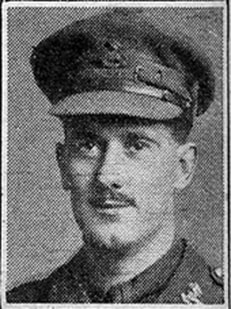
Lieutenant
Harold Quinan Carver
19th Bn. The King's (Liverpool Regiment)
30th July 1916, aged 26.
Plot V. D. 7.
Son of Mr. W. A. and Mrs. A. A. Carver (nee Quinan), of Leeton, New South Wales. Born in Australia.
Harold Quinan Carver
19th Bn. The King's (Liverpool Regiment)
30th July 1916, aged 26.
Plot V. D. 7.
Son of Mr. W. A. and Mrs. A. A. Carver (nee Quinan), of Leeton, New South Wales. Born in Australia.

Captain
T. B. Cutts
15th Bn. Sherwood Foresters (Notts and Derby Regiment)
20th July 1916, aged 29.
Plot V. O. 9.
Son of John and Annie S. Cutts, of "Brooklyn," Private Rd., Sherwood, Nottingham.
His headstone bears the inscription; "Greater Love Hath No Man Than To Lay Down His Life For His Friends." (An altered quote from John 15:13, the actual quote is "Greater love hath no man than this, that a man lay down his life for his friends.")
T. B. Cutts
15th Bn. Sherwood Foresters (Notts and Derby Regiment)
20th July 1916, aged 29.
Plot V. O. 9.
Son of John and Annie S. Cutts, of "Brooklyn," Private Rd., Sherwood, Nottingham.
His headstone bears the inscription; "Greater Love Hath No Man Than To Lay Down His Life For His Friends." (An altered quote from John 15:13, the actual quote is "Greater love hath no man than this, that a man lay down his life for his friends.")

4646 Private
Frederick Lewis Archibald Eaton
2nd Regiment. South African Infantry
18th July 1916, aged 23.
Plot I. Z. 5.
Son of Winifred Eaton, of 15, Hill View Rd., East London, Cape Province, and the late Lewis Eaton
Frederick Lewis Archibald Eaton
2nd Regiment. South African Infantry
18th July 1916, aged 23.
Plot I. Z. 5.
Son of Winifred Eaton, of 15, Hill View Rd., East London, Cape Province, and the late Lewis Eaton
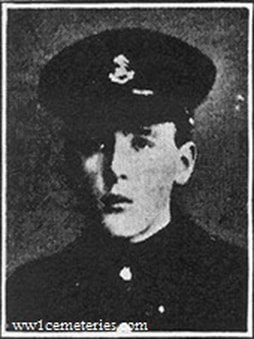
21589 Lance Corporal
N. G. Pinches
19th Bn. The King's (Liverpool Regiment)
30th July 1916, aged 22.
Plot IV. L. 2.
Son of William George and Katherine Pinches, of 66, Lightfoot St., Hoole, Chester.
His headstone bears the following inscription; "Greatly Loved And sadly Missed."
N. G. Pinches
19th Bn. The King's (Liverpool Regiment)
30th July 1916, aged 22.
Plot IV. L. 2.
Son of William George and Katherine Pinches, of 66, Lightfoot St., Hoole, Chester.
His headstone bears the following inscription; "Greatly Loved And sadly Missed."
Images in this gallery © Werner Van Caneghem
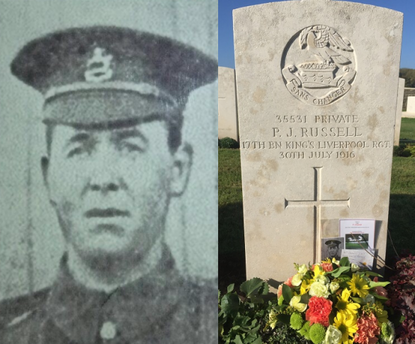
35531 Private
Patrick J. Russell
17th Bn. The King's (Liverpool Regiment)
30th July 1916, aged 22.
Plot III. M. 4.
Patrick was born at Richmond Hill, Braddon on the Isle of Man 25 February 1894. He was killed on 30th July 1916, not far from the cemetery.
Remembered by his Great Nephew David J. Russell and by his Great Nieces Ann Sutherland & Lynn Woosnam
Patrick J. Russell
17th Bn. The King's (Liverpool Regiment)
30th July 1916, aged 22.
Plot III. M. 4.
Patrick was born at Richmond Hill, Braddon on the Isle of Man 25 February 1894. He was killed on 30th July 1916, not far from the cemetery.
Remembered by his Great Nephew David J. Russell and by his Great Nieces Ann Sutherland & Lynn Woosnam

4579 Rifleman
John Sharkey
1st/5th Bn. The King's (Liverpool Regiment)
8th August 1916, aged 18.
XII. H. 3.
Son of Charles and Mary Sharkey, of 2, Roslyn St., Lower Tranmere, Birkenhead.
His headstone bears the following inscription: "For Ever Blessed."
John Sharkey
1st/5th Bn. The King's (Liverpool Regiment)
8th August 1916, aged 18.
XII. H. 3.
Son of Charles and Mary Sharkey, of 2, Roslyn St., Lower Tranmere, Birkenhead.
His headstone bears the following inscription: "For Ever Blessed."

Second Lieutenant
George Thomson
9th Bn. Argyll and Sutherland Highlanders, attd. 1st/14th Bn. London Regiment (London Scottish)
11th September 1916, aged 38.
Plot VIII. H. 1.
Son of James Rodger Thomson, of Clydebank, Glasgow.
George Thomson
9th Bn. Argyll and Sutherland Highlanders, attd. 1st/14th Bn. London Regiment (London Scottish)
11th September 1916, aged 38.
Plot VIII. H. 1.
Son of James Rodger Thomson, of Clydebank, Glasgow.
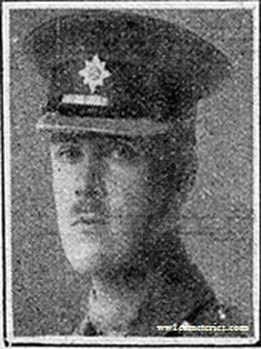
Second Lieutenant
Albin George Tomkins
2nd Bn. Irish Guards
13th September 1916, aged 31.
Plot VII. N. 7.
Son of Albin and Rosa Cavell Tomkins; husband of Hilda Case Sinclair (formerly Tomkins), of Ene-Ametza, Biarritz, France
Albin George Tomkins
2nd Bn. Irish Guards
13th September 1916, aged 31.
Plot VII. N. 7.
Son of Albin and Rosa Cavell Tomkins; husband of Hilda Case Sinclair (formerly Tomkins), of Ene-Ametza, Biarritz, France
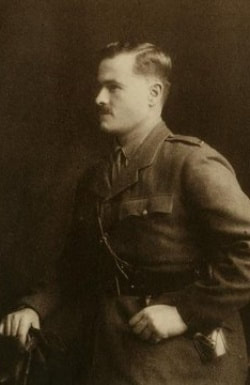
Lieutenant
Ronald Fawcett Carrier Tompson
4th Bn. Grenadier Guards
Killed in action on 11th September 1916, aged 32.
Plot IX. A. 1.
Born April 1884 in Eton, Buckinghamshire
Son of Frances Rosa Tompson, of Round Coppice, Iver Heath, Bucks, and the late Edward C. S. Tompson.
His headstone bears the inscription "To Him, The immortality To Us, The Memory"
Only son of the late Edward Carrier Smith Tompson (O.H.), of Round Coppice, Iver Heath, Bucks, and of his wife, Frances Rosa Tompson. Trinity College, Oxford. Went to British East Africa, where he took up farming. Lieutenant Tompson returned home from East Africa on the declaration of War and received a Commission in the Grenadier Guards. He left for France on December 3ist, 1915, and was instantaneously killed on September 11th, 1916, in the Battle of the Somme, by the bursting of a shell in the trench which his Battalion were holding. He was promoted Lieutenant in the Gazette of November 11th, 1916, dating back to January 26th, 1916, and so never received the news of it. A brother-officer wrote :— " He was without doubt the most popular member of our Company. With his men he was just the same, and there was not one who would not have done anything he asked him."
Pictures and additional text provided by David Welch
Ronald Fawcett Carrier Tompson
4th Bn. Grenadier Guards
Killed in action on 11th September 1916, aged 32.
Plot IX. A. 1.
Born April 1884 in Eton, Buckinghamshire
Son of Frances Rosa Tompson, of Round Coppice, Iver Heath, Bucks, and the late Edward C. S. Tompson.
His headstone bears the inscription "To Him, The immortality To Us, The Memory"
Only son of the late Edward Carrier Smith Tompson (O.H.), of Round Coppice, Iver Heath, Bucks, and of his wife, Frances Rosa Tompson. Trinity College, Oxford. Went to British East Africa, where he took up farming. Lieutenant Tompson returned home from East Africa on the declaration of War and received a Commission in the Grenadier Guards. He left for France on December 3ist, 1915, and was instantaneously killed on September 11th, 1916, in the Battle of the Somme, by the bursting of a shell in the trench which his Battalion were holding. He was promoted Lieutenant in the Gazette of November 11th, 1916, dating back to January 26th, 1916, and so never received the news of it. A brother-officer wrote :— " He was without doubt the most popular member of our Company. With his men he was just the same, and there was not one who would not have done anything he asked him."
Pictures and additional text provided by David Welch



